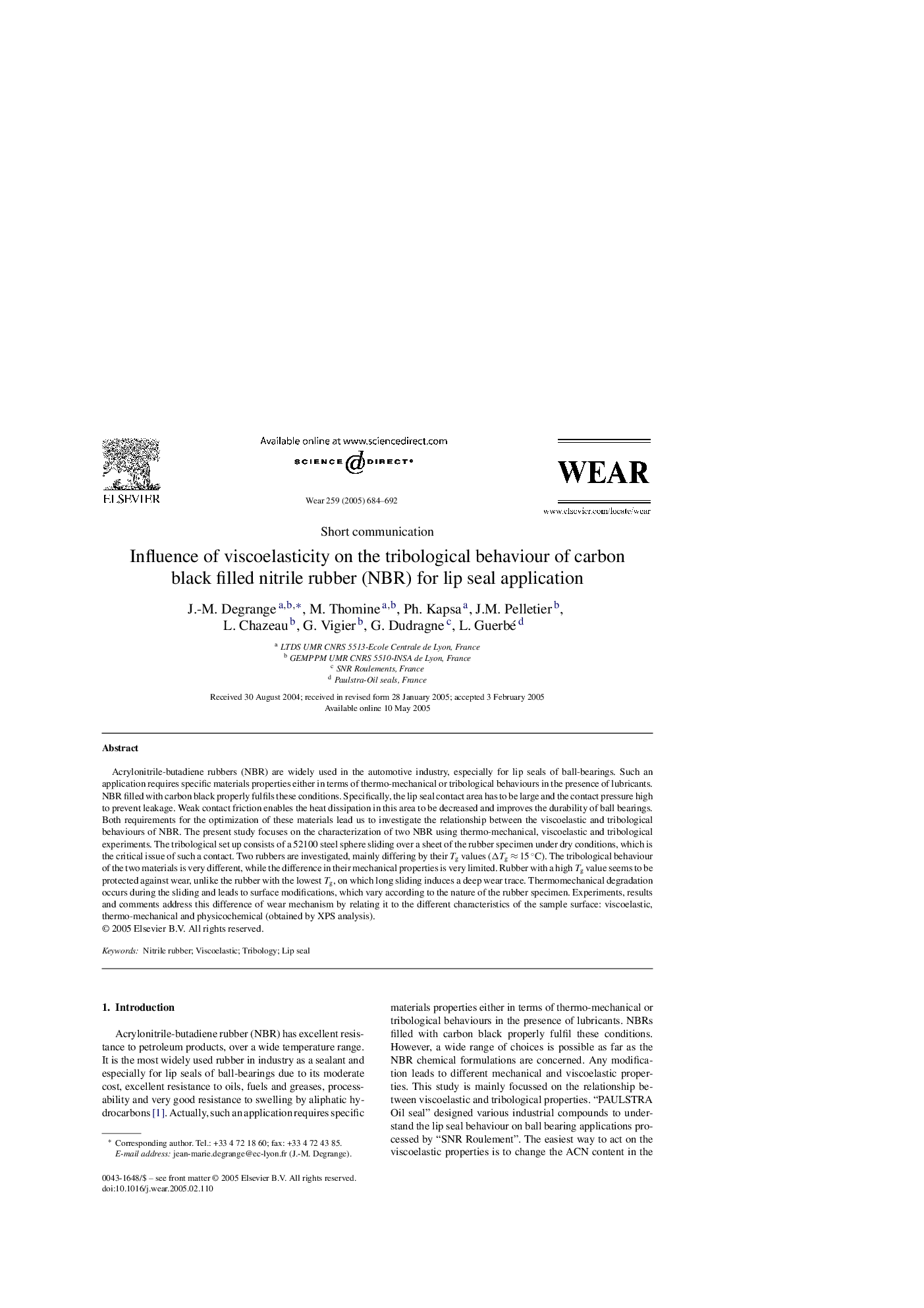| Article ID | Journal | Published Year | Pages | File Type |
|---|---|---|---|---|
| 9679470 | Wear | 2005 | 9 Pages |
Abstract
Acrylonitrile-butadiene rubbers (NBR) are widely used in the automotive industry, especially for lip seals of ball-bearings. Such an application requires specific materials properties either in terms of thermo-mechanical or tribological behaviours in the presence of lubricants. NBR filled with carbon black properly fulfils these conditions. Specifically, the lip seal contact area has to be large and the contact pressure high to prevent leakage. Weak contact friction enables the heat dissipation in this area to be decreased and improves the durability of ball bearings. Both requirements for the optimization of these materials lead us to investigate the relationship between the viscoelastic and tribological behaviours of NBR. The present study focuses on the characterization of two NBR using thermo-mechanical, viscoelastic and tribological experiments. The tribological set up consists of a 52100 steel sphere sliding over a sheet of the rubber specimen under dry conditions, which is the critical issue of such a contact. Two rubbers are investigated, mainly differing by their Tg values (ÎTg â 15 °C). The tribological behaviour of the two materials is very different, while the difference in their mechanical properties is very limited. Rubber with a high Tg value seems to be protected against wear, unlike the rubber with the lowest Tg, on which long sliding induces a deep wear trace. Thermomechanical degradation occurs during the sliding and leads to surface modifications, which vary according to the nature of the rubber specimen. Experiments, results and comments address this difference of wear mechanism by relating it to the different characteristics of the sample surface: viscoelastic, thermo-mechanical and physicochemical (obtained by XPS analysis).
Related Topics
Physical Sciences and Engineering
Chemical Engineering
Colloid and Surface Chemistry
Authors
J.-M. Degrange, M. Thomine, Ph. Kapsa, J.M. Pelletier, L. Chazeau, G. Vigier, G. Dudragne, L. Guerbé,
